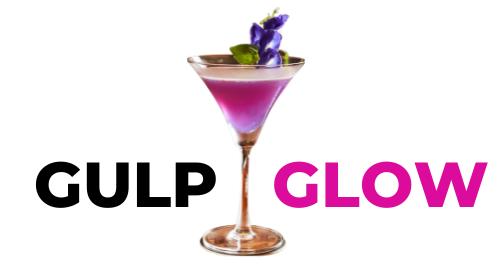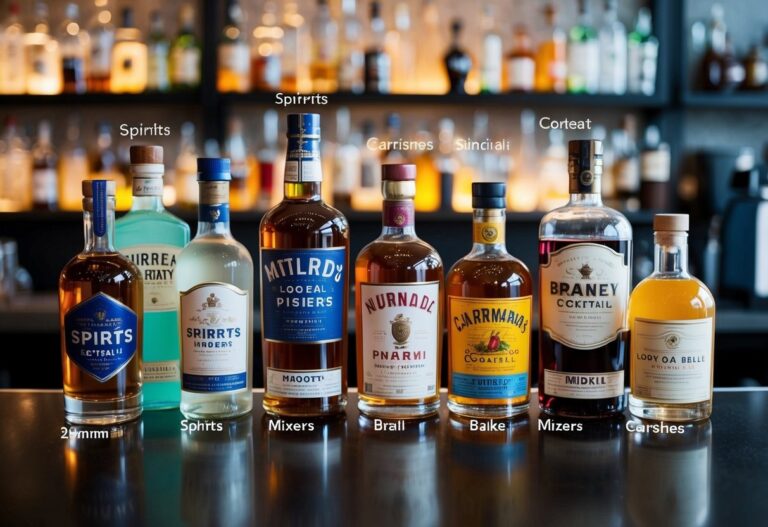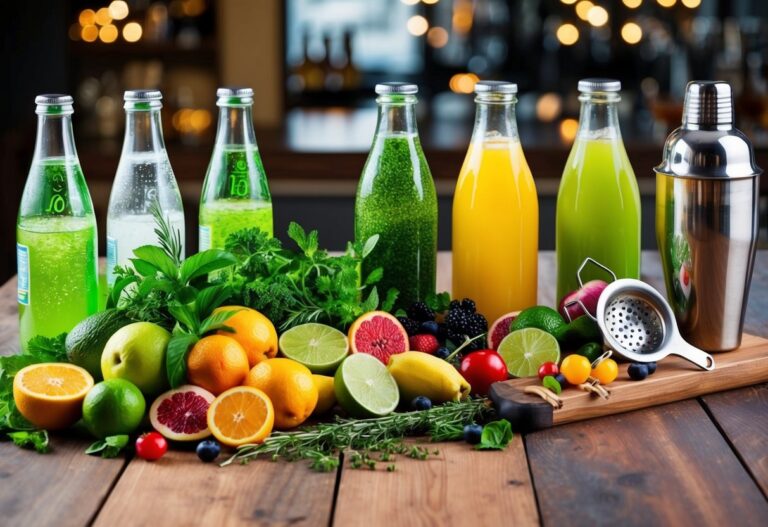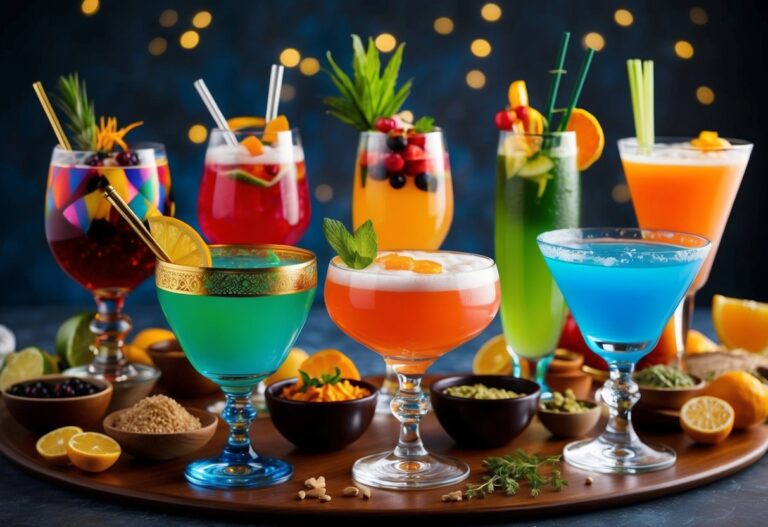Double‑Straining 101: How to Get Clear, Silky Shaken Cocktails Every Time
You shake a Margarita, strain it into the glass—and it looks… gritty. Tiny ice shards float on top, pulp clings to the rim, and the texture is more slush than silk. That’s where double-straining earns its place.
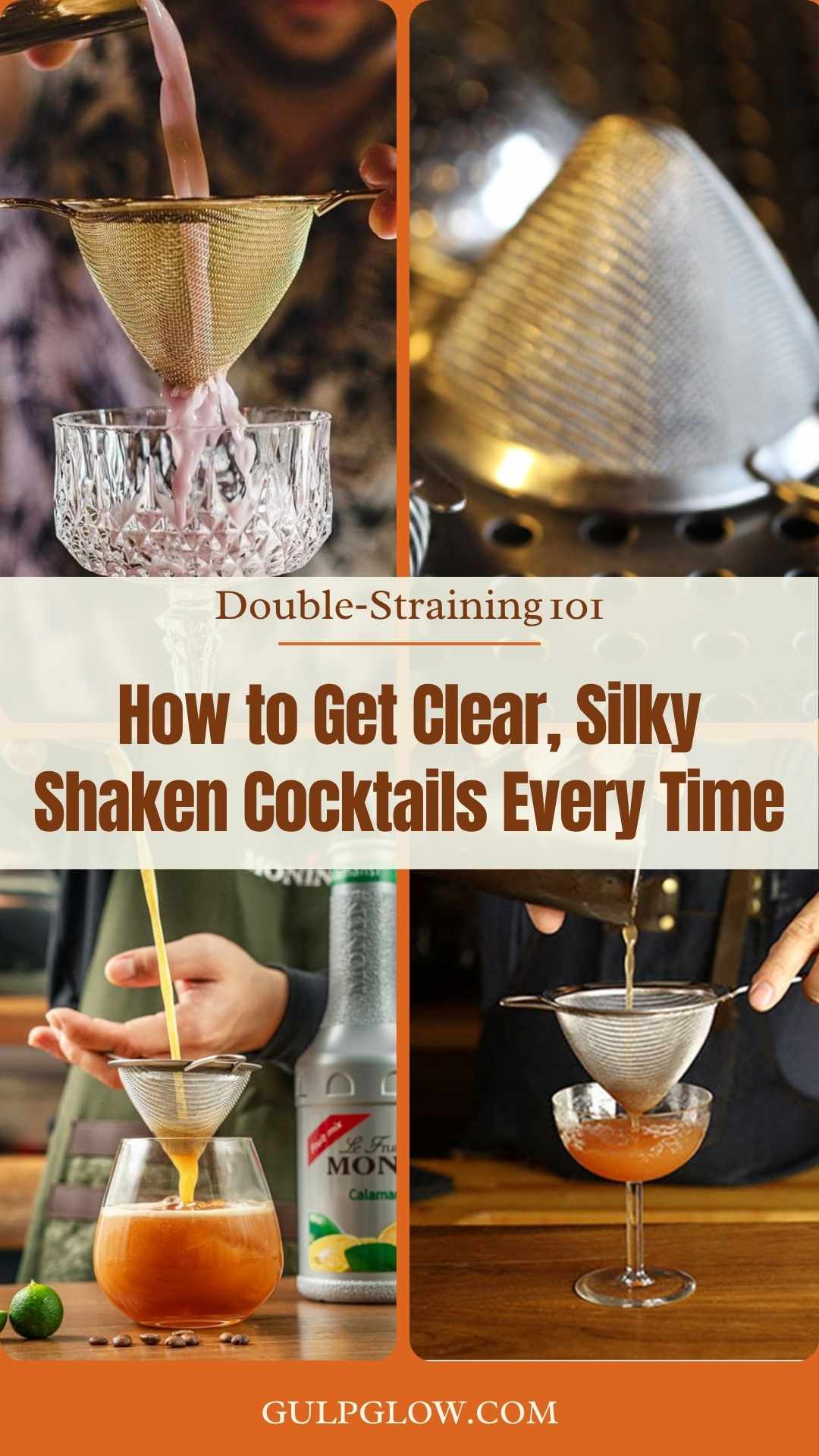
Double-straining is the secret behind crystal-clear, bar-quality cocktails made at home. By using both a Hawthorne strainer and a fine-mesh sieve, you remove all the unwanted fragments: ice shards, citrus pulp, herb bits—anything that interrupts a smooth sip. It’s not just about looks; it’s about mouthfeel and balance.
In this guide, you’ll learn when and why to double strain, how mesh size affects clarity, how to avoid common mistakes (like clogging or over-straining), and which tools get the job done right. We’ll also show you a visual pour demo, and link it all back to foamy shaken drinks like the Daiquiri or Whiskey Sour. Let’s sharpen your strain game—no floating flecks allowed.
What Is Double Straining & When Should You Use It
Double-straining means using two filters—typically a Hawthorne strainer over your shaker and a fine-mesh strainer over the serving glass. The goal is simple: remove every last shard of ice, citrus pulp, or stray ingredient that could disrupt the texture or look of your cocktail.
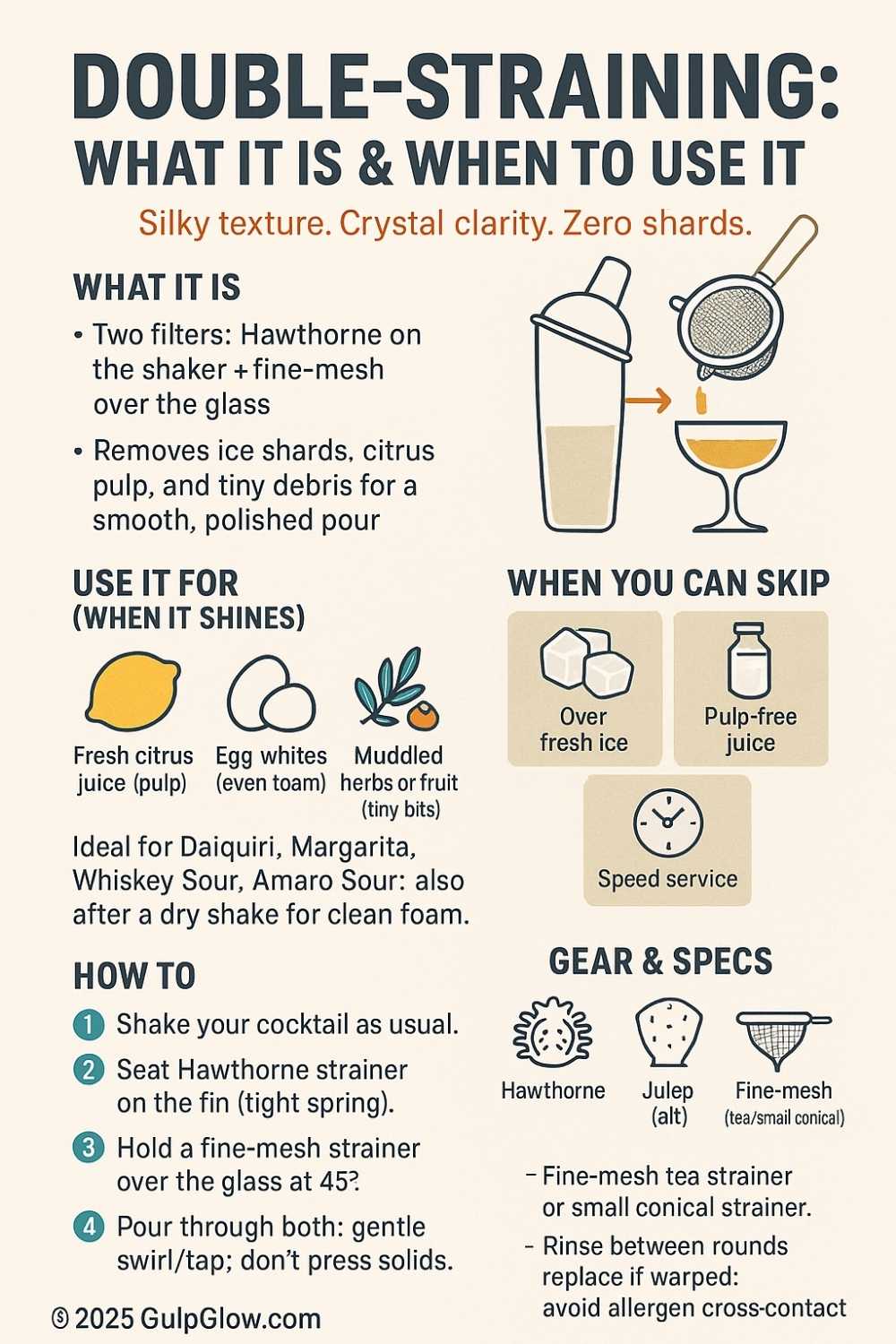
This technique is especially useful for shaken cocktails that include:
- Fresh citrus juice (which leaves behind pulp)
- Egg whites (which can foam unevenly)
- Muddled herbs or fruit (which create tiny debris)
Drinks like the Daiquiri, Margarita, or any kind of Sour benefit from the clean, silky finish that double-straining offers. It’s also essential when you’ve dry-shaken a cocktail and want the foam to sit beautifully on a clear surface—see your Dry Shake post for more on that.
That said, it’s not always necessary. If you’re pouring a shaken drink over ice, or using pre-strained citrus juice with no pulp, single straining might be fine. In fast-paced bar service, some bartenders skip it unless clarity is key. But if you care about polish and texture—double-strain every time.
Strainers & Mesh Sizes: Hawthorne vs Fine‑Mesh
To double-strain effectively, you need the right tools. Each strainer plays a specific role in refining the pour.
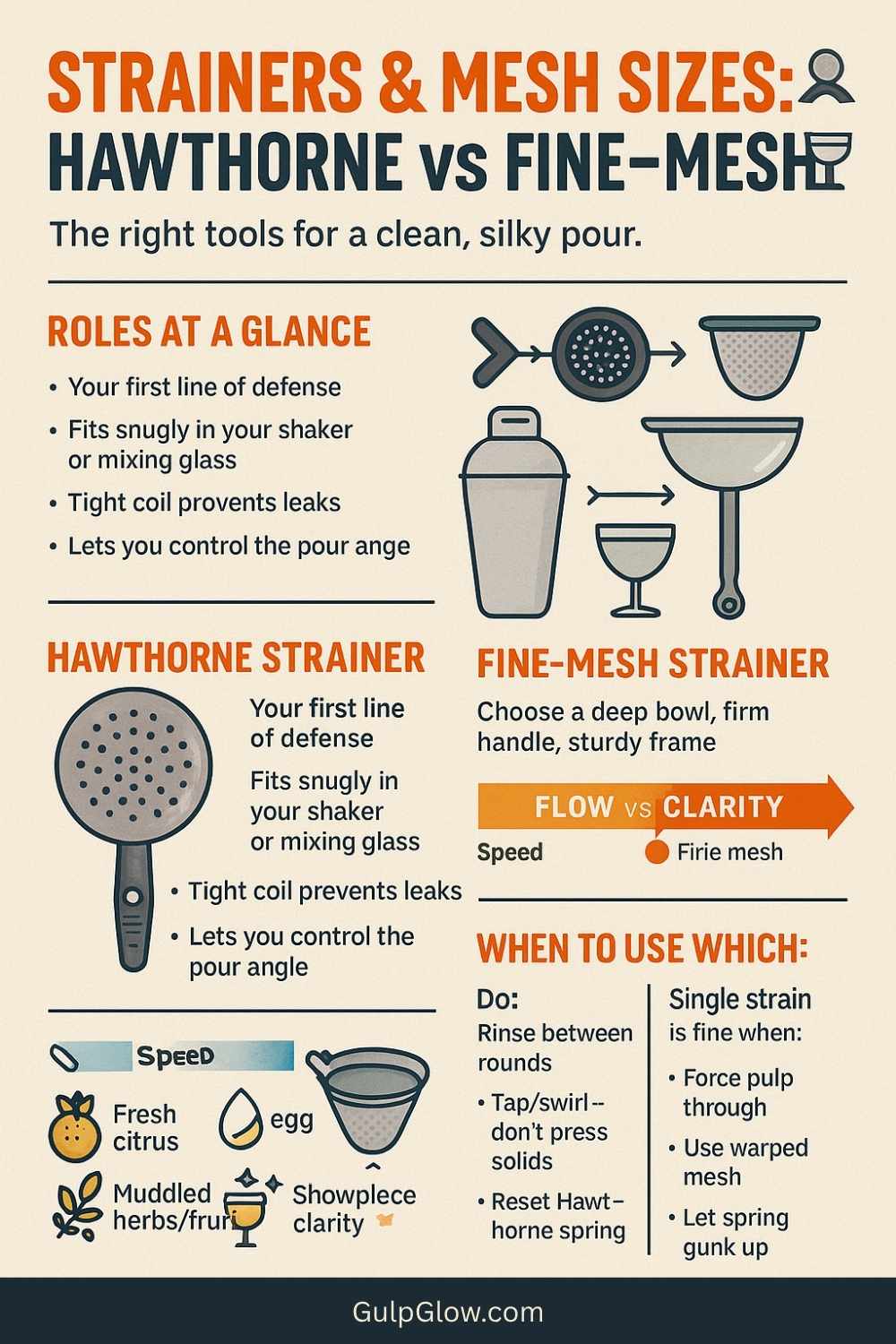
Hawthorne Strainer
This sits atop your shaker tin or mixing glass. It uses a metal spring coil to hold back large pieces of ice and bigger solids. It’s your first line of defense—think of it as the coarse filter.
A good Hawthorne strainer should:
- Fit snugly in your shaker
- Have a tight coil to prevent leaks
- Allow you to control the pour angle easily
Fine-Mesh Strainer
This handheld sieve catches the micro-debris: ice shards, citrus pulp, egg white flecks, even herbs. It’s what gives a cocktail that clear, polished look.
Mesh size matters.
- Fine mesh = better clarity, but slower pour and potential clogging
- Medium mesh = faster flow, may let some particles through
Choose a fine strainer with a deep bowl and a firm handle. Cheap ones tend to warp or clog easily. For speed, some bartenders opt for slightly larger mesh to reduce backup during service—but clarity may suffer slightly.
Combining both strainers balances efficiency and quality. The Hawthorne does the heavy lifting, and the fine mesh handles finesse.
How to Remove Ice Shards & Other Unwanted Bits
Removing ice shards isn’t just about looks—it’s about control. Those tiny chips melt fast, overdiluting your drink and making the texture feel watery or gritty. Here’s how to keep it clean, step by step:
- Shake your cocktail as usual—with ice, vigorously.
- Place the Hawthorne strainer firmly on your shaker tin.
- Hold a fine-mesh strainer above the serving glass.
- Pour slowly through both at once, letting the liquid filter completely.
Watch the mesh strainer closely—it’ll trap small ice bits and pulp. You might need to tap it gently or swirl the last bit to encourage the flow if it’s clogging.
Speed vs Clarity
- For perfect clarity: use a tighter mesh, but pour slowly.
- For speed: go with a medium mesh, accept minor flecks.
- For foam drinks (e.g. Whiskey Sour): double strain to avoid disrupting the foam cap with shards.
If the pour gets stuck midstream, never force it. Lift the mesh, clear it, and finish the pour. It’s better to reset than ruin the presentation.
GIF/Video Demo
Words are helpful—but watching a double strain in action makes all the difference. Seeing how the pour flows through two filters, what gets caught, and how clear the final result looks helps you perfect your technique.
This short clip demonstrates:
- A Hawthorne strainer holding back large ice chunks
- A fine-mesh strainer catching pulp and shards mid-pour
- The difference between pouring through one strainer vs both
What to Observe
- How the mesh collects small debris you’d otherwise drink
- The clear, smooth liquid in the glass
- The steady, controlled pour speed to avoid spillage or clogging
Try filming yourself double-straining a cocktail and compare it to the demo. You’ll quickly notice whether your tools, angle, or pour speed need adjustment. Repetition builds rhythm—and clean drinks.
Best Drinks for Double Straining & Links
Double straining isn’t required in every cocktail—but for certain drinks, it transforms the experience. When a drink is served “up” and made with citrus or egg white, double straining ensures clarity, clean foam, and zero ice flecks.
Must-Double-Strain Cocktails
- Margarita: Especially clean versions with no salt rim benefit from clarity.
- Daiquiri: Lime juice and shaken ice make it a textbook double-strain case.
- Whiskey Sour / Pisco Sour: Combine dry-shake + double-strain for the smoothest foam and texture.
- Bee’s Knees: Fresh lemon and honey syrup can leave pulp and waxy residue.
- Cosmopolitan: The vibrant pink looks its best when completely smooth.
When It’s Optional
- Gin & Tonic: Built over ice—no shake, no strain.
- Highballs / Collins-style drinks: Often poured over ice with minor visual impact.
- Rustic or herbal drinks: Sometimes benefit from “texture” if intentional.
If you’re doing a dry-shake (like in a Clover Club or Ramos Gin Fizz), always double-strain to preserve the foam and remove ice debris that ruins the cap.
For more foam tips, check this article.
Common Mistakes & Troubleshooting
Even a simple technique like double-straining can go sideways. These are the most frequent issues—and how to avoid them.
Mesh Too Fine
If your mesh is ultra-tight, it may clog fast and stop the pour. Result: frustration, over-shaking, or mess. Solution: use a medium-fine mesh strainer for better balance.
Pouring Too Quickly
Fast pours overwhelm the mesh. Slow, steady streams keep the strain even and avoid clogs or spills.
Skipping Double Strain
Especially in citrus-forward drinks, skipping the mesh strainer leaves visible ice chips and pulp. The drink may taste fine, but it won’t feel refined.
Bad Strainer Fit
A loose Hawthorne strainer lets ice escape from the sides. Ensure it’s snug and springs are in place.
Over-Straining
In some drinks, removing all texture removes the drink’s character. If you’ve muddled herbs or used citrus zest, you may want some of that to remain. Don’t double strain everything by default—think before you filter.
The key to mastering double-straining is knowing when it elevates and when it’s excessive. Use it with intent, and your cocktails will look—and drink—like they came from behind a great bar.
Summary & Key Takeaways
Double-straining isn’t just a bartending flex—it’s a technique that transforms your cocktails from “good” to “refined.” By filtering out ice shards, pulp, and debris, you control the texture, visual clarity, and mouthfeel of every shaken drink you serve.
Here’s what to remember:
- When to use it: Anytime you shake with citrus, egg white, or muddled ingredients—and especially when the drink is served “up.”
- Tools matter: Use a Hawthorne strainer for coarse filtration, and a fine-mesh sieve to catch the rest.
- Mesh size trade-off: Finer mesh = clearer drink, but slower pour. Medium mesh = faster, slightly less clean.
- Pour technique: Slow, steady pours prevent clogging and spills. Tap the mesh lightly if needed.
- Avoid overuse: Don’t double strain stirred drinks or those meant to have texture—know when to step back.
Try this: Make two versions of the same cocktail—one double-strained, one not. Taste and look at the difference. It’s subtle, but it’s real.
